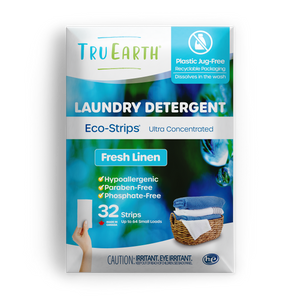In an era of heightened environmental awareness and a growing desire for sustainable living, building an eco-friendly house has become a top priority for many homeowners. But what steps should you take to ensure that your dream home is not only comfortable but also environmentally responsible?
In this article, we'll walk you through the intricate process of building an eco-friendly house, from meticulous planning and innovative design to sustainable construction and long-term maintenance. By the end of this article, you'll have the knowledge and inspiration needed to turn your eco-friendly dream home into a reality.

Meticulous Planning for Your Eco-Friendly Home
Site Selection: A Greener Perspective
Selecting the right location for your eco-friendly house is more than just a matter of aesthetics. Choose a site with optimal solar access, natural landscapes, and proximity to public transportation to reduce your carbon footprint. A well-chosen site can have a substantial impact on your house's overall sustainability.
Green Design: Crafting an Environmentally Conscious Blueprint
Collaborate with an architect or designer experienced in green building principles. Incorporate passive solar design, energy-efficient layouts, and sustainable materials into your house plans. A well-designed eco-friendly house can maximize energy efficiency and minimize environmental impact.
Budgeting for Sustainability
Determine your budget and allocate funds specifically for eco-friendly features. Consider the long-term savings associated with reduced energy bills and resource-efficient designs. Investing in sustainability upfront often pays off in the long run.
Choosing Sustainable Building Materials
Recycled and Reclaimed Materials: Reducing Waste
Make a conscious choice to use recycled or reclaimed materials in your eco-friendly house construction. These can include reclaimed wood from old buildings, recycled glass, or salvaged bricks.
Not only do these materials reduce the demand for new resources, but they also minimize waste and repurpose existing ones.
Sustainable Wood: Fostering Responsible Forestry
Opt for sustainably sourced wood certified by organizations like the Forest Stewardship Council (FSC). Sustainable wood options include bamboo, reclaimed wood, and engineered wood products, all of which promote responsible forestry practices.
Low-impact Insulation: Balancing Comfort and Efficiency
Prioritize eco-friendly insulation materials such as cellulose, recycled denim, or natural wool. These options have a significantly lower environmental impact compared to traditional fiberglass insulation, providing effective thermal performance without the associated drawbacks.
Energy Efficiency: Powering Your Eco-Friendly Home
Solar Power: Harnessing Renewable Energy
Install solar panels on your roof to harness renewable energy from the sun. Solar power can provide both electricity and hot water, significantly reducing your dependence on fossil fuels and lowering your carbon emissions.
Energy-efficient Appliances: Smart Consumption
Choose ENERGY STAR-rated appliances, LED lighting, and programmable thermostats. These selections minimize energy consumption and reduce utility bills while maintaining the comfort and functionality of your eco-friendly home.
High-performance Windows: Optimizing Insulation
Invest in energy-efficient windows equipped with low-emissivity (low-E) coatings and double or triple glazing. These windows improve insulation, reduce heat transfer, and contribute to a comfortable indoor environment.
Water Conservation
Rainwater Harvesting: Sustainable Water Management
Implement a rainwater harvesting system to collect and store rainwater for non-potable uses, such as irrigation and toilet flushing. This practice conserves water from municipal sources and lowers your utility bills.
Drought-resistant Landscaping: A Natural Choice
Choose native, drought-resistant plants for your landscaping. These plants require less water, reducing the need for irrigation and maintenance. Additionally, they support local biodiversity and create a beautiful, sustainable outdoor environment.
Indoor Air Quality: A Healthy Living Space
Natural Ventilation: Fresh Air, Naturally
Design your eco-friendly house with ample natural ventilation through strategically placed windows, ventilation systems, and operable skylights. Proper ventilation reduces the need for air conditioning and enhances indoor air quality.
Air Purification: Enhanced Indoor Comfort
Install air purification systems equipped with HEPA filters to remove allergens, dust, and pollutants from indoor air. These systems ensure a clean and healthy living space for you and your family.
Waste Reduction and Recycling
Construction Waste Management: Minimizing Waste
Implement a waste management plan during construction to recycle or responsibly dispose of construction debris. This practice reduces the environmental impact of your construction project and minimizes landfill contributions.
Recycling Stations: Household Recycling
Set up recycling stations inside your eco-friendly home to encourage proper recycling practices among occupants. Convenient recycling options make it easy for everyone to contribute to sustainability.
Composting: Nutrient-rich Soil
Establish a composting system in your yard to reduce organic waste and create nutrient-rich soil for gardening. Composting is an eco-friendly way to divert kitchen scraps and yard waste from landfills.
Maintenance and Green Living
Routine Maintenance: Preserving Efficiency
Regularly maintain your eco-friendly home by servicing solar panels, checking for leaks, and cleaning air filters. Routine maintenance ensures the continued optimal performance of your sustainable features.
Community Engagement: Sharing Sustainability
Get involved in your local eco-conscious community to share ideas, resources, and best practices with like-minded individuals. Collaborating with others amplifies your impact and fosters a sense of environmental responsibility.

Building Dreams and Saving the Planet!
Building an eco-friendly house is not only about creating a comfortable living space; it's a commitment to making a positive impact on the environment and future generations.
By planning thoughtfully, selecting sustainable materials, and adopting eco-friendly living practices, you can create a home that reflects your dedication to a greener, more sustainable planet. Your eco-friendly house will not only provide a healthy and energy-efficient living environment but also inspire others to make environmentally responsible choices.


